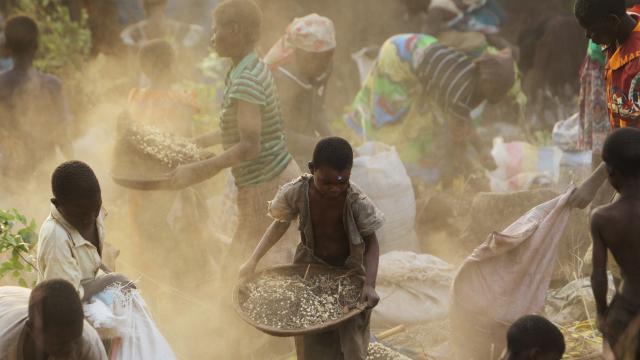A staggering 2 billion people around the world don’t have enough nutritious food to eat, and climate shocks like drought, heat waves, and extreme rainfall have played a large role in their plight, according to a new United Nations (UN) report. At the same time, the world also has an increasing number of people who are becoming obese, showing that our food system is bifurcating at the seams into the have-too-muches and the have-nots.
Many of those suffering from hunger live in the developing world. And the trends are only likely to get worse as climate change causes food prices to spike, according to another UN report on climate change and land that was leaked on Monday to India’s The Wire. Together, the findings show that the world needs to get its act together and reimagine the agricultural system we’ve relied on to make it more equitable and ready for a hotter planet.
The Food and Agriculture Organisation, the wing of the UN that deals with — well, those things — chronicled the state of hunger in its annual State of Food Security and Nutrition in the World report released on Monday. The findings build on previous reports, which showed that after decades of decline, hunger became more acute in 2015. It has since held steady with 11 per cent of the world’s population suffering undernourishment. The worst impacts are in Africa where 20 per cent of the population is undernourished, a number that’s been “on the rise in almost all African subregions” according to the report. All other parts of the developing world are also seeing a rise in undernourishment.
That only tells part of the woeful food story, though. The report shows that adding together those that are hungry with those who are facing “moderate food insecurity” and the number of people without regular access to good food balloons to 2 billion people. Economic downturns are the biggest drivers of undernourishment in middle income countries, particularly those with major agriculture industries.
But climate shocks and conflict — and sometimes the interplay of the two — are the biggest source of food crises in some of the poorest countries on Earth. The list of countries hit by climate and conflict-related food insecurity in 2018 includes Sudan, Niger, and Syria while climate along with a worsening economy drove food insecurity in Mozambique (which is likely to suffer food insecurity again this year due to back-to-back cyclones) and many of the Central American countries that people have left in pursuit of asylum in the U.S.
Meanwhile, obesity is also on the rise worldwide, with the report warning that this worsening epidemic is creating a $3 trillion drag on the healthcare system. Within wealthy countries, there’s also the perverse reality the obesity epidemic often hits poorest communities the hardest because of food deserts and readily available, cheap fast food.
These widening fissures show that the world is largely able to produce enough food, it just does a terrible job of distributing it equitably. Dietary changes like the one outlined in a report from the EAT Lancet Commission earlier this year are one avenue to help bring our food system back in balance.
That report, along with the new FAO report, also calls for the “structural transformation that also fosters poverty reduction and more egalitarian societies” to make sure people aren’t starving. Among the recommendations are addressing income inequality, improving access to quality healthcare, and cash transfers to the poor and school nutrition programs, all of which align with recommendations in other major UN reports released in the past year chronicling the precipice humanity stands on and how we can walk back from it.
Climate change adds another wrinkle to these structural changes and makes them more imperative than ever. Agriculture will become more challenging in a warming world as heat bakes soil and crops and increasingly intense droughts and floods further take their toll.
The Wire report on the a leaked draft of a forthcoming UN report on climate change and land says that cereal prices could rise 29 per cent by 2050 as arable land gets reduced in some regions and crops get whacked by the aforementioned climate shocks. Agriculture could also play a role in combatting climate change by sequestering carbon in the soil, offering yet another way changes in how we farm could truly benefit everyone.
